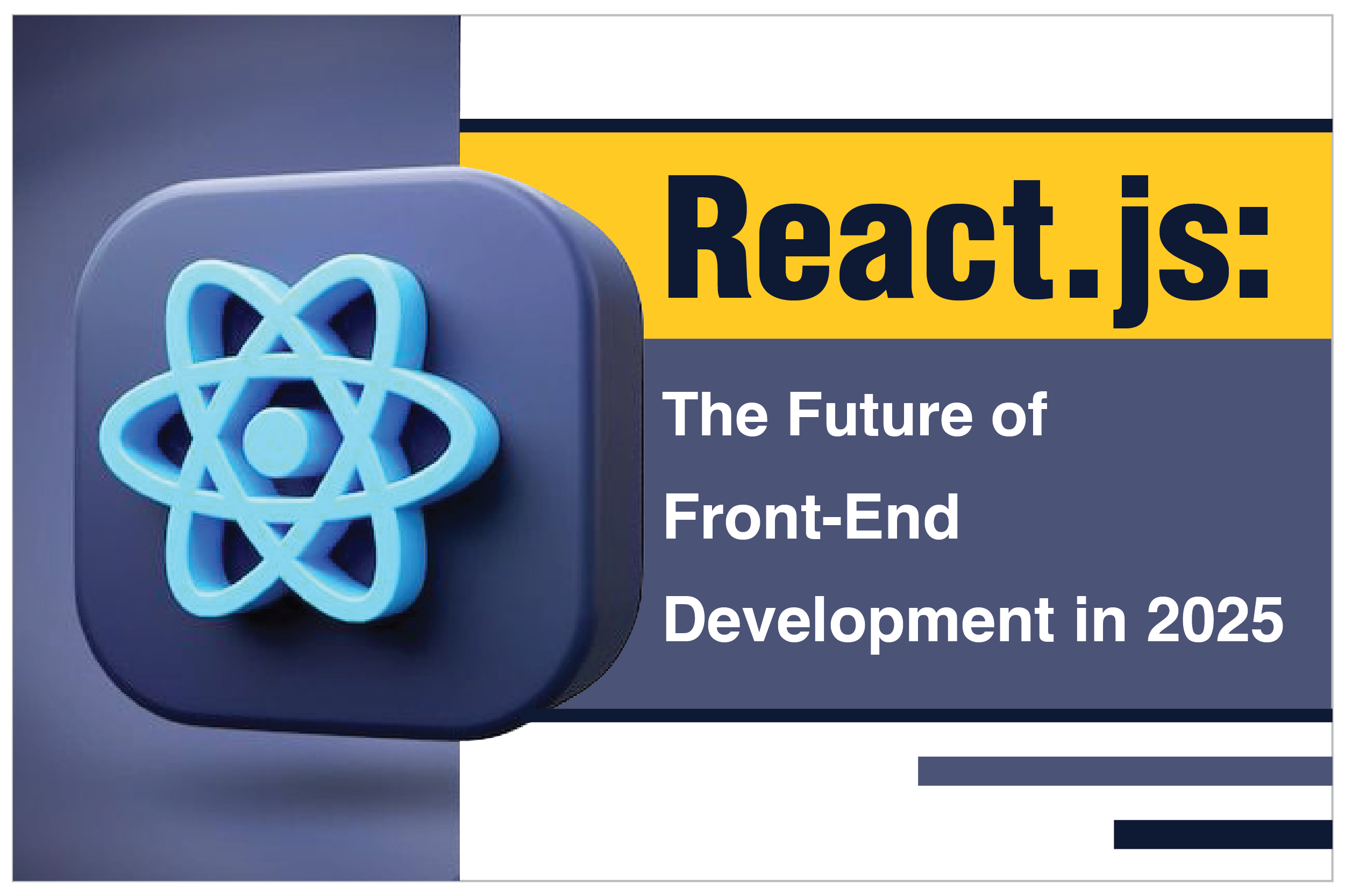React.js: The Future of Front-End Development in 2025
Admin
|
June 27, 2025

In 2025, React.js continues to dominate front-end development with its component-based architecture, high performance, and evolving ecosystem. This blog explores why React remains the top choice for developers, highlighting trends like TypeScript integration, React Server Components, micro-frontends, and tools like Vite.js. Learn how enterprise apps leverage React for scalability and discover how Gradient Infotech’s expert training can help you stay ahead in modern React development.
React.js: The Future of Front-End Development in 2025
In the ever-evolving world of web development, React.jscontinues to lead the front-end ecosystem in 2025. With its unmatchedflexibility, high performance, and a powerful developer community behind it,React has become the go-to JavaScript library for building fast, interactiveuser interfaces.
Let’s dive into why React.js remains the future of front-end development in2025 and beyond.
Why Developers Still Choose React.js in 2025
React.js’s component-based architecture makes it easier to createre-purposes and modular UI elements. Today's developers are more dependent onfunctional components and React hooks such as useState, UseEffect and useContextto manage the application logic more efficiently.
In 2025, projects are more dynamic than ever. Using React Router V6, wecreate modern single-page applications (SPA) with smooth navigation and dynamicrouting.
Virtual DOM updates and reactive rendering ensure lightning-fast load times,giving users a experience regardless of device or platform.
What’s New and Trending in React Development
React development in 2025 has embraced several powerful tools and patternsthat are reshaping how front-end apps are built:
· TypeScript with React is nowthe standard, offering type safety and better tooling support duringdevelopment.
· React Server Components and React Suspense aremaking real-time, streaming UI updates smoother than ever.
· Concurrent rendering isimproving responsiveness by prioritizing tasks more intelligently.
· Recoil.js and Zustand are now widely adopted for simpler andfaster global state management, providing alternatives to traditional Reduxsetups.
· Vite.js is becoming thepreferred tool for setting up React projects with its lightning-fast buildspeed and instant hot module replacement (HMR).
If you're a developer or a tech team planning for long-term scalability,these are the tools and patterns you should be adopting in 2025.
Building Enterprise-Grade Applications with React
Enterprise-level applications demand maintainability, scalability, andperformance. React excels here with features like:
•Code splitting using React.lazy and suspense tooptimize load time.
•Atomic design systems that break UI down into reusable parts,making it easier to manage large projects.
•Component libraries such as material UI, ant design andcycle UI are widely used for sharp and consistent user interface development.
• Using a Storybook for isolated component growthmakes the collaboration in large teams and conducts more estimated tests.
With GraphQLintegration, WebSockets and real-time features that use API-operatedarchitecture, reaction apps are now more powerful and connected than ever.
Micro-Frontends and Modular Architecture
A major trend in 2025 is the use of micro-frontends in large-scaleapplications. Instead of building monolithic front-end apps, developers are nowcreating smaller, independently deployable React modules that communicate witheach other.
This architecture allows for faster development cycles, better code separation,and multiple teams working on different parts of an app without codebaseconflicts.
Testing, Monitoring & Performance
Modern React projects rely on Jest, React Testing Library,and Cypressfor robust testing—from unit tests to full end-to-end coverage. Pair that withtools like ESLint,Prettier,and Huskyto enforce coding standards across teams.
React's performance tools and development ecosystem make debugging, logging,and optimization easier than ever before, ensuring your application performswell in any environment.
Real-World Example: A Scalable React Application
At GradientInfotech, we recently built a complex dashboard for a logisticsclient using React.js,Next.js,and TypeScript.The app supports live tracking, dynamic charts, and role-based user dashboards.Thanks to codesplitting, dynamic imports, and React Query for datafetching, the application is fast, reliable, and easy to maintain.
We also implemented custom React hooks for data transformation andcentralized state management using Recoil, making the application logicclean and scalable.
React Is Built for the Future
React’s ever-growing ecosystem and its seamless compatibility with moderndevelopment tools like Next.js, Redux Toolkit, GraphQL, Tailwind CSS, and Vite makeit a top choice for developers in 2025.
As mobile and desktop applications continue to converge, frameworks like React Nativeand tools like Expo allow teams to build native apps using the sameReact codebase—bridging the gap between web and mobile development.
Gradient Infotech offersexpert training in Modern React Development
Gradient Infotech provides comprehensivetraining to help you master building dynamic, scalable, and high-performanceapplications with React.js. Whether you want to learn to create new single-pageapps, migrate projects to TypeScript, or understand micro-frontendarchitecture, our training covers it all.
Discover more about our training programs and connect with us at https://gradientinfotech.com. Let’s build your React skills—one component at atime.